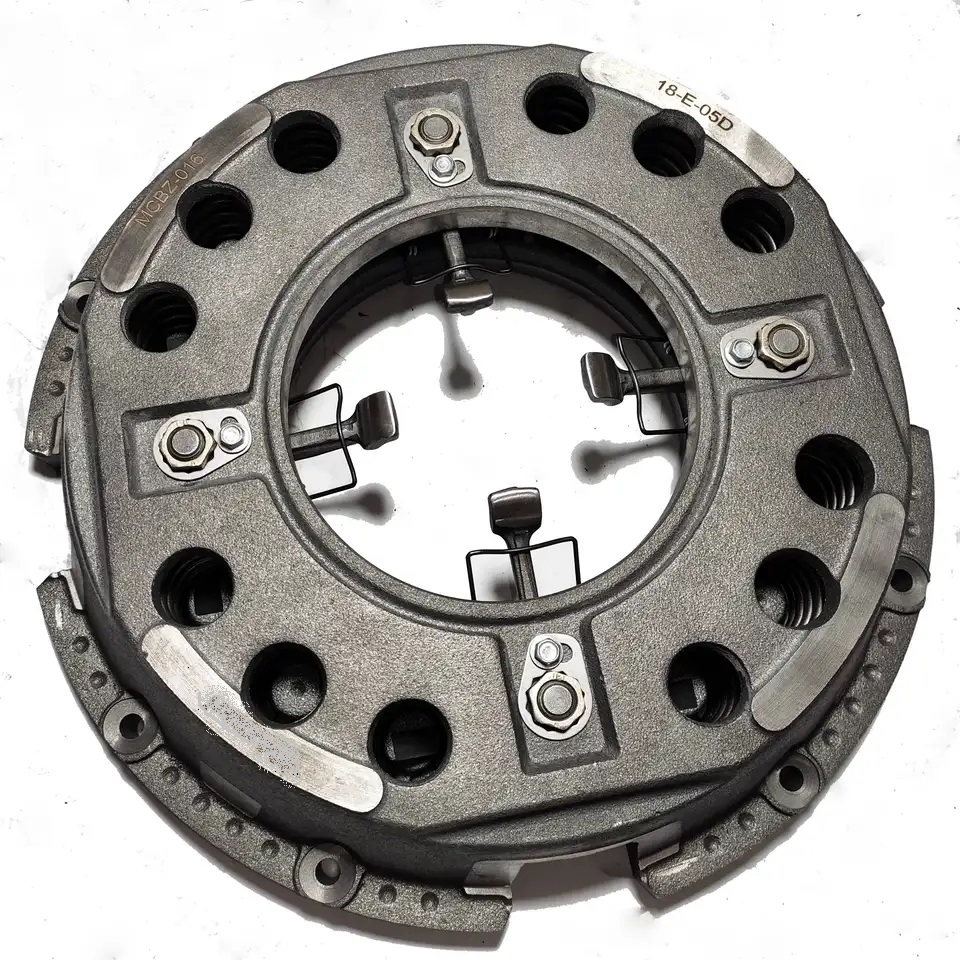
Choosing the Right Clutch and Transmission for Your Heavy-Duty Truck
The clutches and transmissions in a heavy-duty truck are critical components of its powertrain, directly impacting performance, fuel efficiency, and the overall driving experience. Selecting the appropriate clutch and transmission for your specific application is a significant decision for fleet managers and owner-operators alike. Factors such as the truck's intended use, the typical loads it will carry, and the terrain it will navigate all play a crucial role in determining the optimal setup.
As a leading truck parts supplier, All Truck Parts offers a wide range of high-quality clutch and transmission components. Understanding the different types available and their specific advantages will empower you to make informed decisions that enhance your truck's operation and longevity.
Understanding Heavy-Duty Truck Clutches

The primary function of a truck clutch is to temporarily disconnect the engine from the transmission, allowing for smooth gear changes and controlled starts and stops. Heavy-duty trucks typically utilise robust clutch systems designed to withstand the stresses of high torque and frequent use.
Types of Clutches:
- Single-Plate Clutches: These are the most common type, featuring a single friction disc sandwiched between the flywheel and the pressure plate. They are reliable and suitable for a wide range of applications.
- Two-Plate Clutches: Designed for higher torque applications, two-plate clutches offer increased friction surface area, providing greater holding power and durability.
- Self-Adjusting Clutches: These clutches automatically compensate for wear on the friction linings, maintaining consistent pedal effort and extending service life.
- Key Clutch Components: The clutch assembly includes the friction disc (or discs), pressure plate, release bearing, and pilot bearing. The friction disc, similar in principle to brake shoes, linings & kits, is a wear item that will eventually need replacement. The pressure plate applies force to the friction disc, engaging the clutch. The release bearing disengages the clutch when the pedal is pressed.
Factors to Consider When Choosing a Clutch:
- Engine Torque: The clutch must be rated to handle the maximum torque output of the engine.
- Application: Trucks used for heavy hauling or severe service will require a more robust clutch than those used for lighter loads on smoother terrain.
- Driver Preference: Some drivers prefer a softer pedal feel, while others prefer a more direct engagement.
When it comes time for replacement, choosing high-quality spare parts for trucks from a reputable heavy duty truck parts manufacturers is essential to ensure proper performance and durability. All Truck Parts is a trusted source for a variety of clutch components, ensuring you can find the right match for your vehicle.
Exploring Heavy-Duty Truck Transmissions
The transmission multiplies the engine's torque and provides the driver with a range of gear ratios to suit different driving conditions. Heavy-duty truck transmissions are built for durability and the ability to handle significant power.
Types of Transmissions:
- Manual Transmissions: These require the driver to manually select gears using a shift lever and clutch pedal. They offer greater driver control and are often preferred for demanding applications. Common configurations include 9-speed, 10-speed, 13-speed, and 18-speed transmissions.
- Automated Manual Transmissions (AMTs): These transmissions operate like manual transmissions but use electronic controls and actuators to automatically shift gears. They offer a balance of fuel efficiency and ease of operation, reducing driver fatigue.
- Automatic Transmissions: Similar to those found in passenger cars, these transmissions use a torque converter to transmit power and automatically select gears based on engine speed and load. They are known for their smooth shifting and ease of use, particularly in stop-and-go traffic.
- Key Transmission Components: Transmissions consist of gears, shafts, bearings (bearings), and synchronisers (in manual transmissions). The synchronisers help to mesh gears smoothly during shifts.
Factors to Consider When Choosing a Transmission:
- Gross Vehicle Weight Rating (GVWR): Heavier trucks require transmissions with higher torque capacity and more gear ratios.
- Engine Power: The transmission must be compatible with the engine's horsepower and torque output.
- Typical Routes and Terrain: Trucks operating on steep grades or in stop-start conditions may benefit from transmissions with a wider range of lower gears. Highway haulers often prioritise transmissions with overdrive ratios for fuel efficiency.
- Driver Skill and Preference: The availability of manual, AMT, or automatic options caters to different driver preferences and skill levels.
As a comprehensive provider of truck and trailer parts, All Truck Parts stocks a variety of transmission components and complete units from leading truck parts manufacturers. Whether you require a specific gear, a set of diaphragm & seals, or a complete transmission assembly, choosing a reliable truck parts supplier is crucial for minimising downtime and ensuring a proper fit.
Matching the Clutch and Transmission to Your Needs
The optimal choice of clutch and transmission is not made in isolation. These two components must work together effectively to deliver the desired performance and efficiency.
Application-Specific Considerations:
- Long-Haul Trucking: Fuel efficiency and driver comfort are key priorities. Overdrive ratios in the transmission and durable, self-adjusting clutches are often preferred.
- Construction and Vocational Trucks: These applications demand robust clutches with high holding power and transmissions with a wide range of lower gears for navigating challenging terrain and carrying heavy loads.
- Regional and Local Delivery: Maneuverability and ease of operation are important. AMTs or automatic transmissions can be advantageous in stop-and-go traffic.
- Considering Future Needs: When selecting a clutch and transmission, it's wise to consider potential future changes in your truck's usage or the loads it will carry. Choosing components with a slightly higher capacity than your current needs can provide a buffer and extend service life.
- The Importance of Compatibility: Ensuring that the chosen clutch and transmission are fully compatible with your truck's engine and other powertrain components is paramount. Consulting with a truck parts specialist or referring to OEM specifications can help you avoid costly errors. All Truck Parts' experienced team can provide guidance on selecting the right heavy truck parts for your specific vehicle.
Maintenance and Longevity of Clutches and Transmissions
Proper maintenance is crucial for maximising the lifespan and performance of your truck's clutch and transmission.
- Clutch Maintenance: Avoid riding the clutch, perform regular inspections of the clutch linkage, and ensure proper lubrication of the release bearing. Promptly address any signs of slipping or noise. Using high-quality hardware kits for any repairs will contribute to the longevity of the system.
- Transmission Maintenance: Follow the manufacturer's recommendations for fluid changes and inspections. Ensure proper fluid levels and check for any leaks. For manual transmissions, proper shifting techniques can significantly reduce wear on synchronisers and gears. Regularly inspecting and maintaining related components such as air & electric coils and control valves that may be part of automated systems is also important.
Conclusion
Selecting the right clutch and transmission is a critical investment in your heavy-duty truck's performance and efficiency. By understanding the different types available, considering your specific application, and partnering with a reliable truck parts supplier like All Truck Parts, you can make informed decisions that will contribute to the long-term success of your operation. Remember that regular maintenance and the use of quality commercial truck and trailer parts are essential for maximising the lifespan and reliability of these vital powertrain components. Whether you operate a single truck or a large fleet, choosing the right clutches and transmissions is a key factor in navigating the demands of the road ahead.




